Space Junk Clean Up: 7 Wild Ways to Destroy Orbital Debris
Solar Sails, Slingshots & More
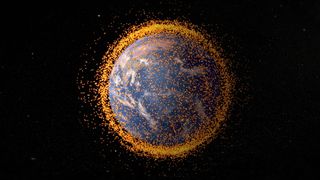
With half a million pieces of space debris cluttering Earth's orbit, according to NASA, this means there is a growing problem of cluttering up our access road to space. Several companies and entities have proposed ways to get rid of derelict satellites and other space junk.
Here are seven recent proposals, ranging from electrical currents to slingshoting to knocking debris down.
FIRST STOP: Europe's e.DeOrbit Idea
Snagging and Moving Space Junk
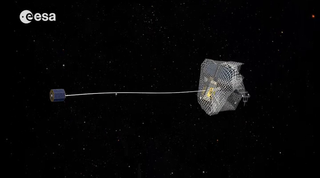
The e.DeOrbit mission – first proposed publicly in early 2014 – would seek out satellite debris in a polar orbit at an altitude between 800 and 1,000 kilometers (500 to 620 miles). The European Space Agency is considering several kinds of "capture mechanisms" to pick up the debris, such as nets, harpoons, robotic arms and tentacles.
NEXT: Swiss CleanSpaceOne Nanosatellite
Pushing Debris Out of Space
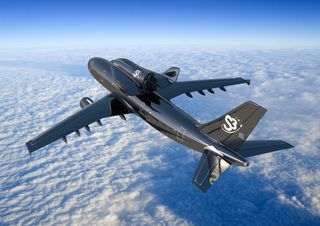
CleanSpace One, a technology demonstration spacecraft, is expected to launch in 2018 from the back of a modified Airbus A300 jumbo jet. The Swiss Space Systems satellite would then meet up with a decommissioned SwissCube nanosatellite to move it out of orbit. See more photos of CleanSpaceOne here.
NEXT: Japan's Electrodynamic Tether
Using the Power of Electricity

The Japanese Aerospace Exploration Agency proposes to use an electrodynamic tether whose current would slow down the speed of satellites or space debris, according to an early 2014 report from Agence France Presse. Slowing the satellite speed would make it gradually fall closer to Earth, where it will burn up. A satellite using part of the system was expected to launch Feb. 28 (without capturing a satellite), with a tether test proposed for 2015.
NEXT: A Space Debris Slingshot
A Space Debris Slingshot
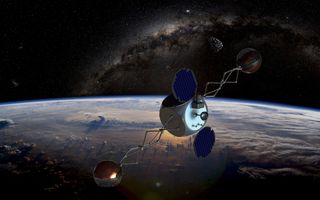
To save on fuel, Texas A&M University's Sling-Sat Space Sweeper proposes swinging capturing an object, swinging it towards Earth's atmosphere, and then using the momentum to sail on to the next piece of space debris for removal. The researchers were still examining design ideas as of early 2013.
NEXT: Space Junk Solar Sail
Solar Sail
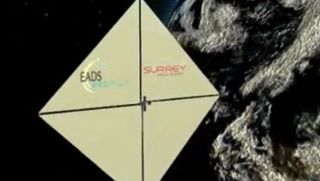
A British proposal called CubeSail would use the drag of a solar sail to push orbiting space debris down to lower orbits. Initially slated to fly in 2011, the proposal is still under design and is expected to build on more recent small satellite experience from its maker Surrey Space Centre, specifically the STRaND-1 nanosatellite that flew in February 2013.
NEXT: Space Debris Elimination that Huff and Puff
Huffing and Puffing
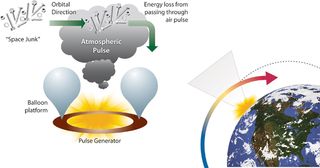
This method (called Space Debris Elimination, or SpaDE) would push satellites into a lower orbit by using air bursts within the atmosphere. A design proposal from Daniel Gregory of Raytheon BBN Technologies in Virginia would use a balloon or high-altitude plain to send the bursts out, which early studies in 2012 indicated could be enough to disturb the paths of low-Earth orbital debris.
NEXT: A Space Debris Net
Knock Junk Down with a Net
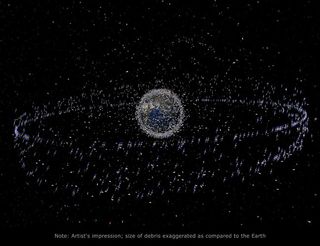
A network of nanosatellites, connected with a piece of electrically conducting tape that could be as long as 2 miles (3 kilometers), could knock satellites down as it passes through Earth's magnetic field and produces voltage. The solar-powered ElectroDynamic Debris Eliminator (proposed by Star Technology and Research, Inc.) could get rid of all large pieces of satellite debris in low-Earth orbit within a dozen years, its proponents said in 2011 (adding they needed more funding to make it a reality).
More Resources:
Photos: Space Debris Images & Clean Up
Space Junk Explained: How Orbital Debris Threatens Future of Spaceflight (Infographic)
Space Debris - How It Got There, What To Do About It? | Video
Space Junk and Orbital Debris: Latest News
Follow Elizabeth Howell on Twitter @howellspace. Follow us @Spacedotcom, Facebook and Google+.
Join our Space Forums to keep talking space on the latest missions, night sky and more! And if you have a news tip, correction or comment, let us know at: community@space.com.
Get the Space.com Newsletter
Breaking space news, the latest updates on rocket launches, skywatching events and more!

Elizabeth Howell (she/her), Ph.D., is a staff writer in the spaceflight channel since 2022 specializing in Canadian space news. She was contributing writer for Space.com for 10 years before joining full-time. Elizabeth's reporting includes multiple exclusives with the White House, speaking several times with the International Space Station, witnessing five human spaceflight launches on two continents, flying parabolic, working inside a spacesuit, and participating in a simulated Mars mission. Her latest book, "Why Am I Taller?" (ECW Press, 2022) is co-written with astronaut Dave Williams.